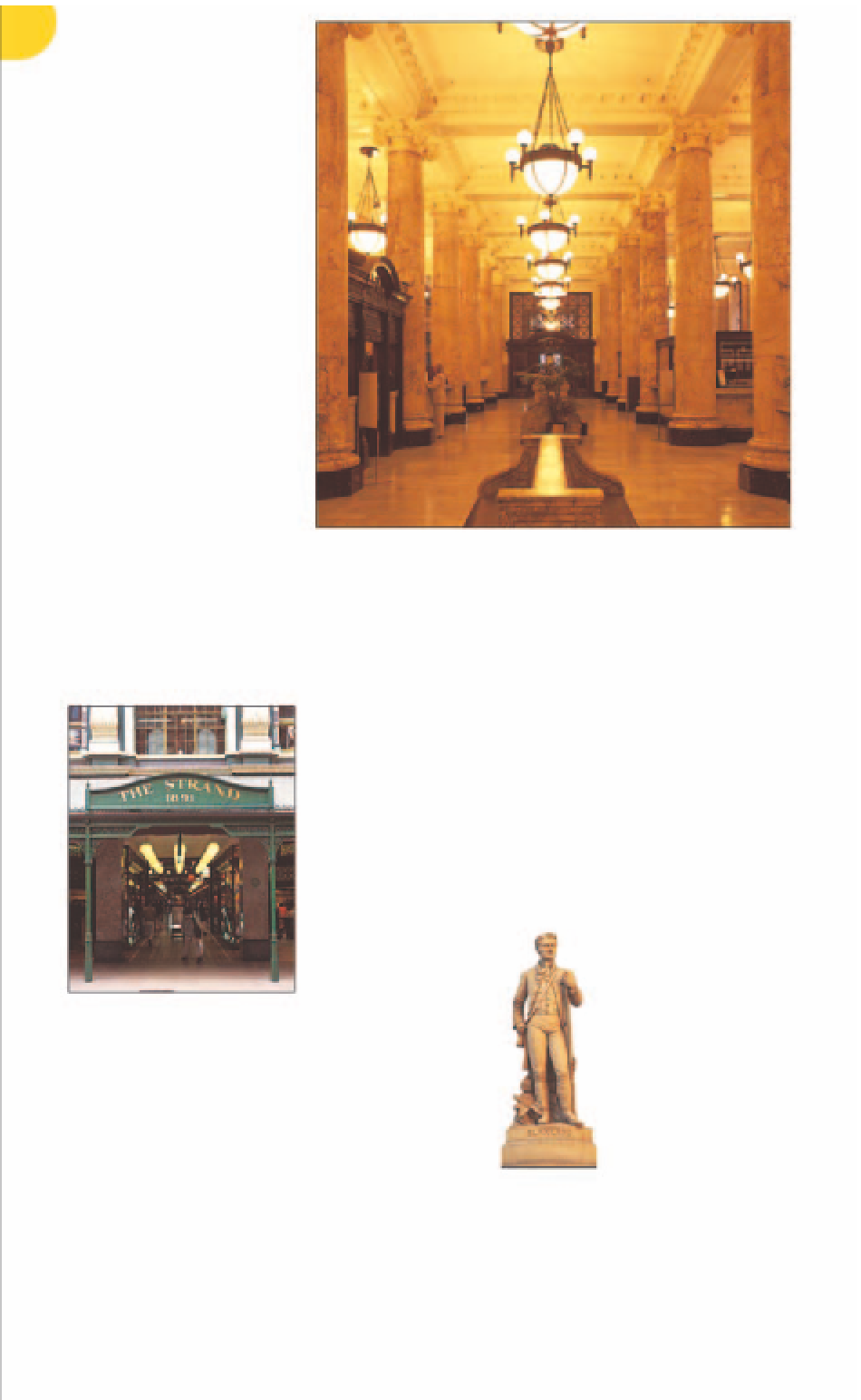Travel Reference
In-Depth Information
Strand Arcade
5
412-414 George St.
Map
1 B5.
Tel
9232 4199.
@
George St
routes.
9am-5:30pm Mon-Wed
& Fri, 9am-9pm Thu, 9am-4pm Sat,
11am-4pm Sun.
#
¢
some public
hols, 25, 26 Dec.
See
Shops
and Markets
pp198-201.
7 6
Victorian Sydney was a city of
grand shopping arcades. The
Strand, joining George and Pitt
Streets and designed by
English architect John Spencer,
was the finest jewel in the city's
crown. The blaze of publicity
surrounding its opening in
April 1892 was equalled only
by the natural light pouring
through the glass roof and the
artificial glare from the chan-
deliers, each carrying 50 jets
of gas as well as 50 lamps.
The boutiques and shops in
the galleries make window
shopping a delight in this airy
building which, after a fire in
1976, was restored to its origi-
nal splendour. Be sure to stop,
as shoppers have done since
opening day, for refreshments
at one of the beautiful coffee
shops in the arcade.
Interior of National Australia Bank, George Street end of Martin Place
sponsored by the Sydney City
Council, in a performance
space near Castlereagh Street.
Every Anzac Day, a national
day of war remembrance on
25 April, the focus moves to
the Cenotaph at the George
Street end. Thousands of past
and present servicemen and
women attend a dawn service
and wreath-laying ceremony,
followed by a march-past. The
shrine, with bronze statues of a
soldier and a sailor on a granite
base, by Bertram MacKennal,
was unveiled in 1929.
On the southern side of the
Cenotaph is the symmetrical
façade of the Renaissance-
style General Post Office,
considered to be the finest
building by James Barnet,
Colonial Architect. Con-
struction of the GPO, as
Sydneysiders call it, took
place between 1866 and
1874, with additions in
Pitt Street between 1881
and 1885. Most contro-
versial were the relief
figures executed by
Tomaso Sani. Although
Barnet declared that
the figures represented
Australians in realistic form,
they were labelled “grotesque”.
A stainless steel sculpture
of upended cubes, the Dobell
Memorial Sculpture stands
above a waterfall which was
funded by public subscription
following a donation by artist
Lloyd Rees. The sculpture, a
tribute to the artist William
Dobell
(see p31)
, was created
by Bert Flugelman in 1979.
Lands Department
Building
7
23 Bridge St.
Map
1 B3.
@
325,
George St routes.
#
only 2 weeks,
dates vary.
7
Designed by the Colonial
Architect James Barnet, the
three-storey Classical Revival
sandstone edifice was built
between 1877 and 1890.
As for the GPO building,
Pyrmont sandstone was
used for the exterior.
Decisions about the sub-
division of much of rural
eastern Australia were
made in offices within.
Statues of explorers and
legislators who “pro-
moted settlement” fill
23 of the façade's 48
niches; the remainder
are still empty. The
luminaries include the
explorers Hovell and Hume,
Sir Thomas Mitchell, Blaxland,
Lawson and Wentworth
(see
p136)
, Ludwig Leichhardt, Bass
and Matthew Flinders and the
botanist Sir Joseph Banks.
The Pitt Street entrance to the
majestic Strand Arcade
Martin Place
6
Map
1 B4.
@
George St & Elizabeth
St routes.
Martin Place.
Running from George Street
across Pitt, Castlereagh and
Elizabeth Streets to Macquarie
Street, this plaza was opened
in 1891 and made a traffic-free
precinct in 1971. It is busiest at
lunchtime when city workers
enjoy their sandwiches while
watching free entertainment,
Statue of explorer
Gregory Blaxland







































